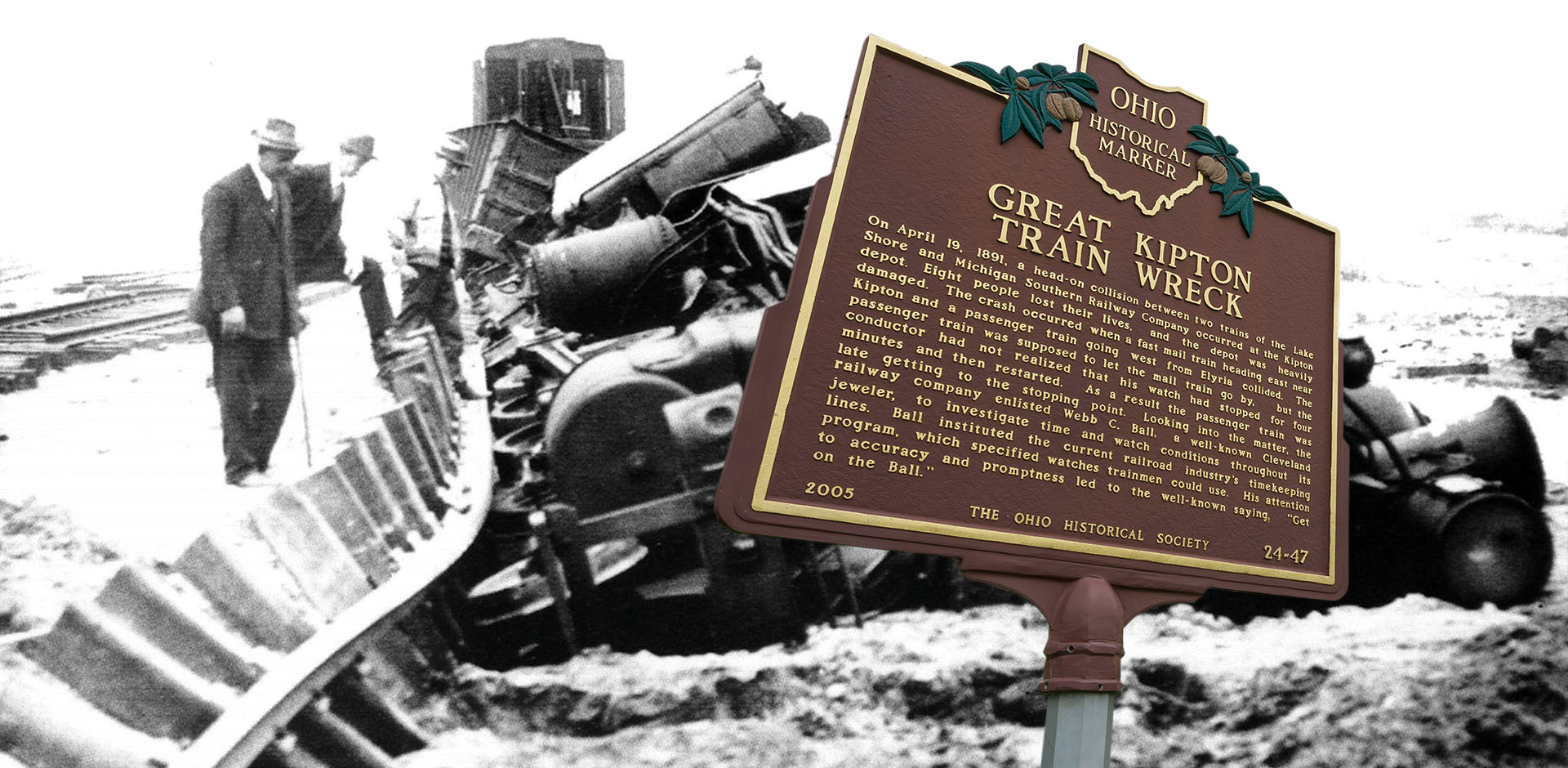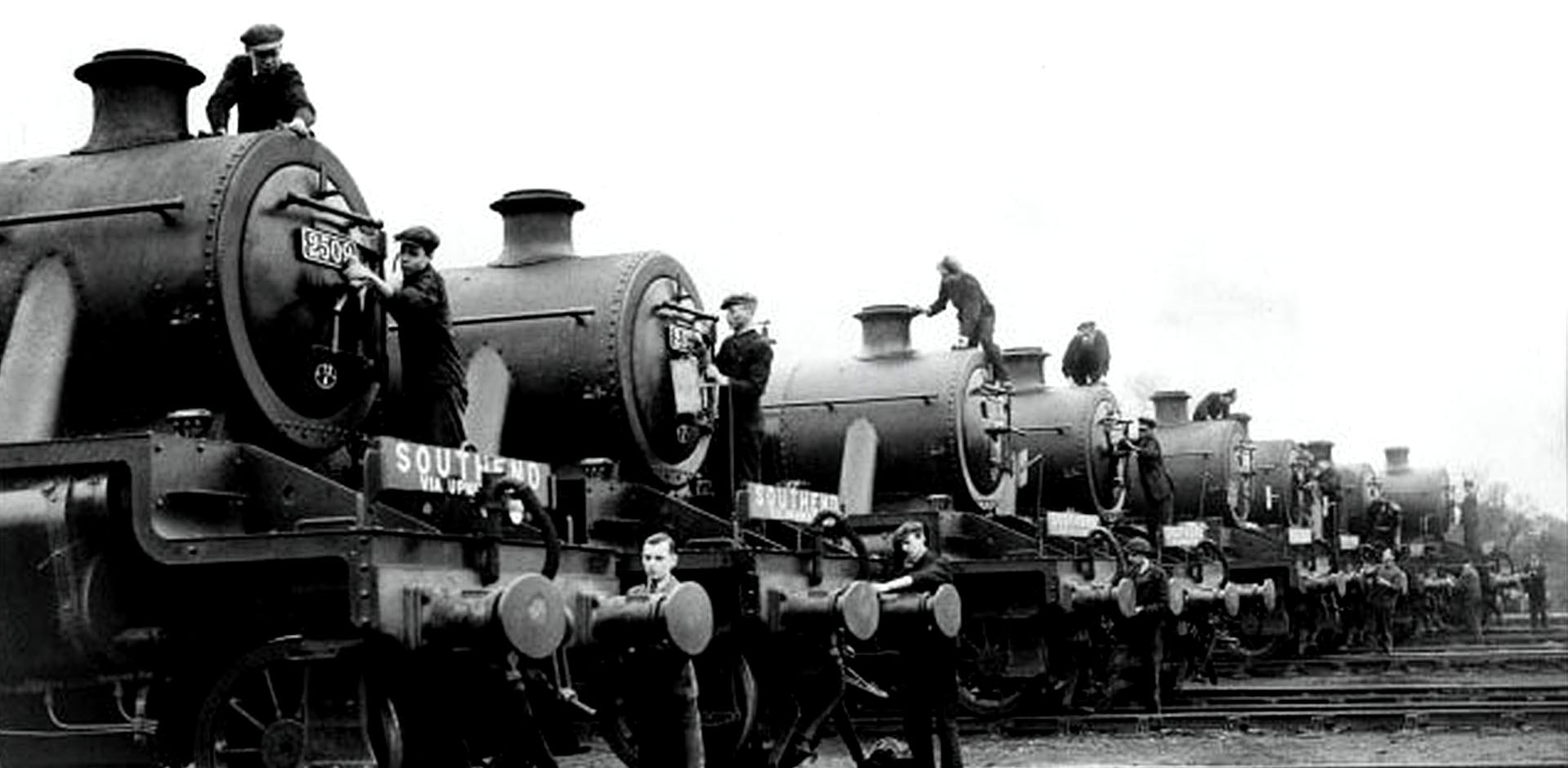HISTORY
To a large extent, the development of the watch industry in America can be attributed to the advent and subsequent development of American railroads. Prior to the advent of trains as a means of transporting people and goods, there was no real need for precise timekeeping or uniform time. Even after the railroad system in the United States had reached significant proportions following the Civil War, communities continued to maintain their local times. By the end of 1883, the railroad industry had agreed, at least among themselves, to divide the nation into four time zones and had adopted Standard Time. The public soon followed suit, although it is interesting to note that the Congress did not officially sanction the concept until 1918. In 1996, Cleveland, Ohio, celebrated the bicentennial of the founding of the city on the lake. During this celebration, many individuals were remembered and recognized as Cleveland's favorite sons, and their accomplishments were reviewed. One Clevelander honored, whose accomplishments reached international acclaim, not only for his civic contributions, but also for his place in horology, was Webster Clay Ball. Webb C. Ball was born in Fredericktown, Ohio on October 6, 1847. When Standard Time was adopted in 1883, he was the first jeweler to use time signals, bringing accurate time to Cleveland. On July 19, 1891, the General Superintendent of Lake Shore Lines appointed Webb C. Ball as Chief Inspector for the lines. His early inspection system was the beginning of the vast Ball network that would encompass 75% of the railroads throughout the country and cover at least 175,000 miles of railroad. Webb C. Ball also extended his system into Mexico and Canada.
On April 19, 1891 the Fast Mail train known as No. 4 was coming west on the Lake Shore & Michigan Southern Railroad in Kipton, Ohio. At Elyria, 25 miles from Cleveland, the Engineer and the Conductor of the Accomodation were given orders to let the fast mail train pass them at Kipton, a small station west of Oberlin, the University town. As the Conductor of Accomodation admitted afterward, from the time the train left Elyria until it collided with the Fast Mail at Kipton, he did not take his watch out of his pocket. He said that he supposed the Engineer would look out for Fast Mail No. 4. But the Engineer's watch stopped for four minutes and then began running again, a little matter of life and death of which he was unconscious. There were several stations between Elyria and Kipton, but the Engineer pounded slowly along in the belief that he had time to spare. Leaving Oberlin, the Engineer supposed he had seven minutes before reaching the meeting point. Of course he only had three minutes. Had the Conductor looked at his own watch he could have prevented the accident. The trains came together at Kipton, the Fast Mail at full speed and the Accomodation under brakes, because it was nearing the station. The Engineers of both trains were killed, and the dead bodies of nine clerks were taken from the kindling wood and broken iron of the postal cars.
The Kipton Disaster prompted the Lake Shore officials to enlist Webb C. Ball to investigate Time and Watch conditions throughout the Lake Shore Line and develop an inspection system for their implementation. Webb C. Ball set about immediately and put in place fortnightly checks on the watches worn by all railroad workers. The checks were carried out by approved watchmakers. Ball set strict standards, forbidding variations more than 30 seconds among the watches. It is important to recognize and applaud Webb C. Ball for designing the first successful system that was accepted on a broad scale. It was his system that set the standard for railroads; it was his system that helped establish accuracy and uniformity in timekeeping. It was his system that resulted in railroad time and railroad watches being recognized as STANDARD, whenever accuracy in time was required. In general, it became accepted that when the average person asks a railroad man the time, he is assured a correct answer.
Today, BALL Watch is one of the most respected and established watch brands in the United States. We continue to update the product range in the 21st century to keep pace with shifting consumer patterns. But, despite changes in appearance, the founding spirit of the brand - industrial function - is never compromised. It is upheld in Ball's original details, such as the watch dial that faithfully follows his design guidelines for the standard railway watch. Every detail, from the shape of the hands to the style of the numerals, was laid down by the founder in his quest for accuracy in timekeeping. It is a vision that the Ball family remains faithful to. For legions of men and women today whose split-second decisions keep the world ticking, it is a shared commitment.
BALL Watch - Since 1891, accuracy under adverse conditions






